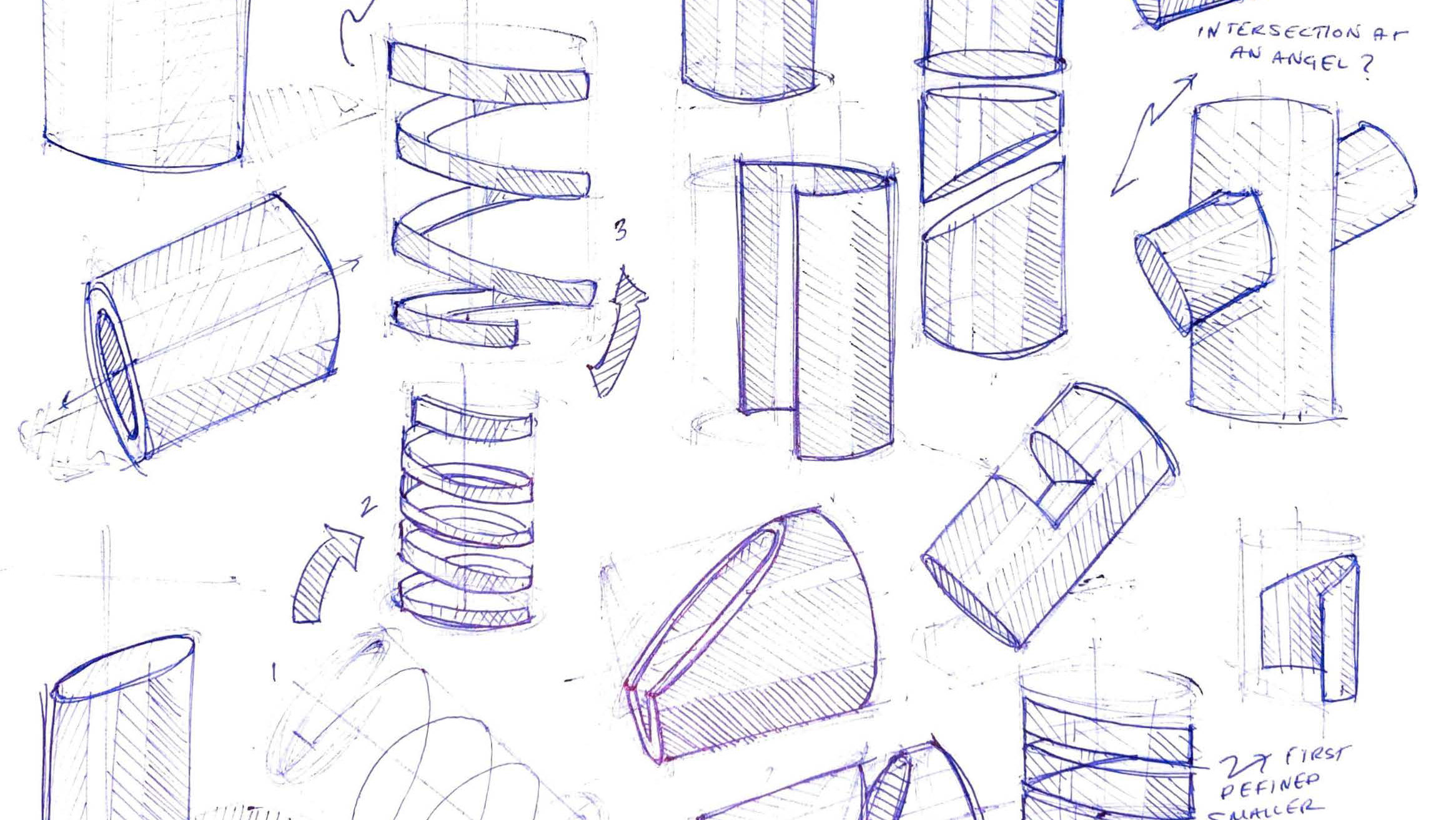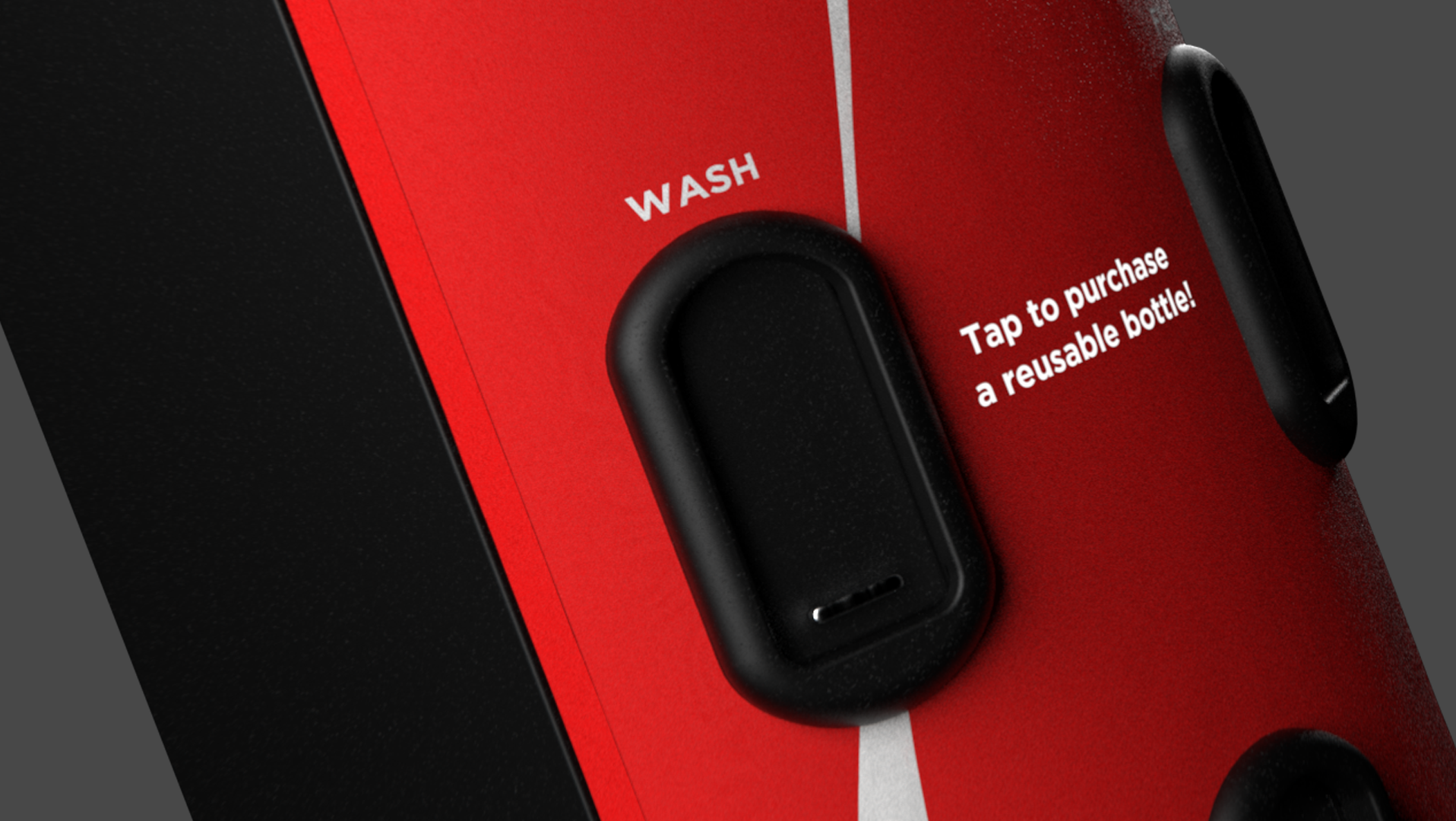This helmet's interaction is relatively simple - it helps the user say "yes", and it helps the user say "no". The narrative that drives this interaction, however, is much more emotionally complex and provocative. This helmet helps people make hard choices. When faced with a yes or no question, we often immediately know our answer, but, due to social or emotional consequences, we hesitate from blurting it out. This helmet helps overcome these challenges. When wearing this helmet, you are asking to remove yourself from the decision you make; you are asking to be understood and perceived as nothing more than a logically-complex computer limited to yes and no outputs. Ultimately, this frees you to make necessary choices - no matter how cold, unemotional, or calculated they are.
Phase 1 : Ideation
This phase consisted primarily of both form and interaction exploration. Each sketch was not only an attempt to understand the form an interaction could take, but was, too, an attempt to understand why an interaction was compelling and worthwhile.






Phase 2 : Concept Refinement
After the ideation phase, two viable, compelling interactions were picked to expand upon. This expansion included a refinement of form, a selection of components, and a more thorough understanding of the final interaction.






Phase 3 : Initial Prototype
After gathering the necessary components - including a microcontroller, RGB LEDs, and an acceleration sensor - a rudimentary prototype was created using a hat and glasses. Although rudimentary in form, having the necessary components allowed for refinement of the interaction, especially as it came to rotational velocity thresholds in detecting head nods and shakes.


Phase 4 : Integrated Model I
Using an accurate 3D head scan and Fusion 360, the helmet was designed to fit the human head and was converted to 2D laser cutting files. Although the form of helmet was finalized, this initial modeled revealed necessary changes in materials - most importantly from paper to translucent acrylic to diffuse the LEDs - and allowed for further refinement in the interaction.



Phase 5 : Final Model
Ultimately, this helmet achieves its emotional goals - it is paradoxically and effectively both inhuman and expressive.











